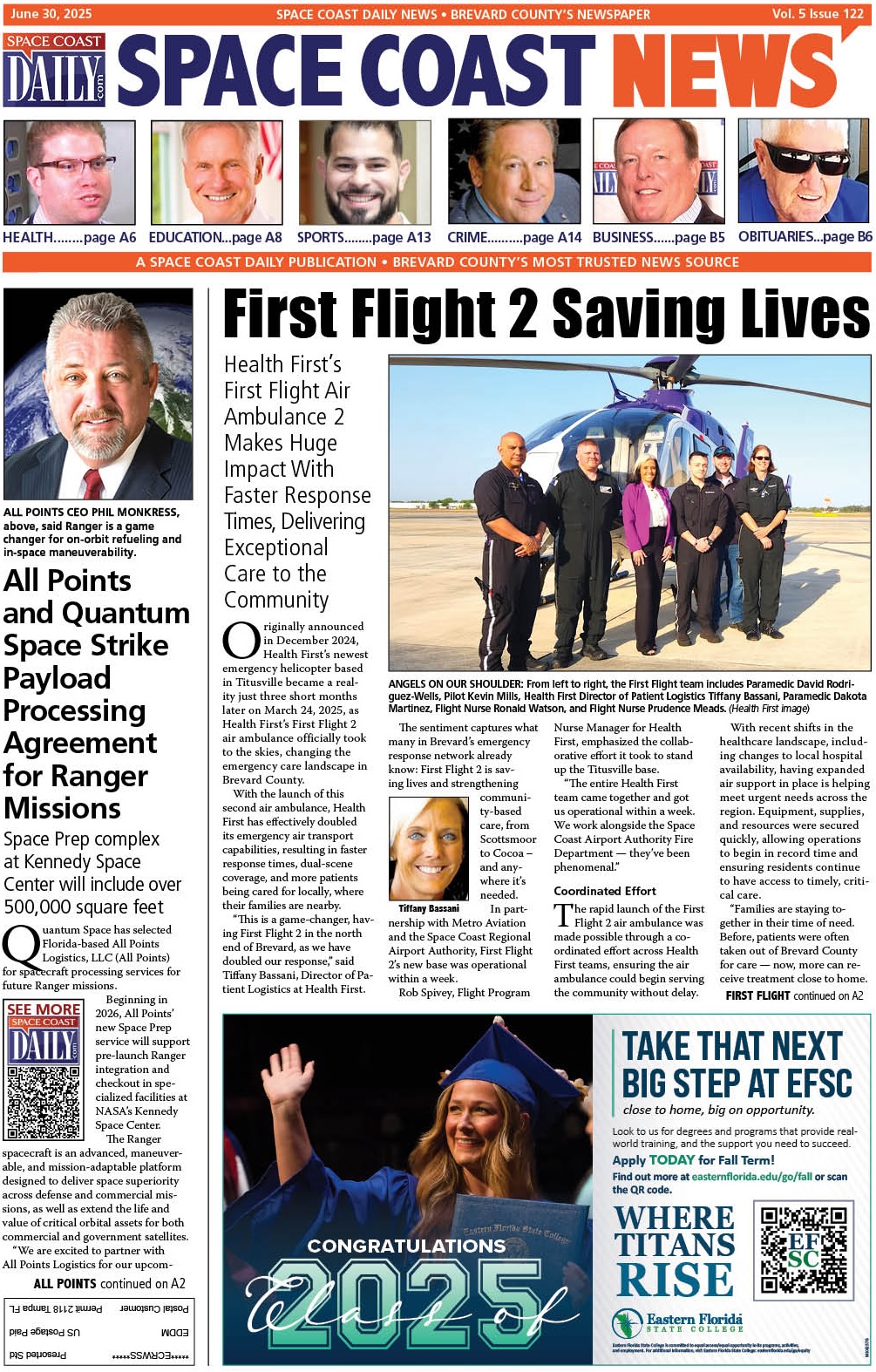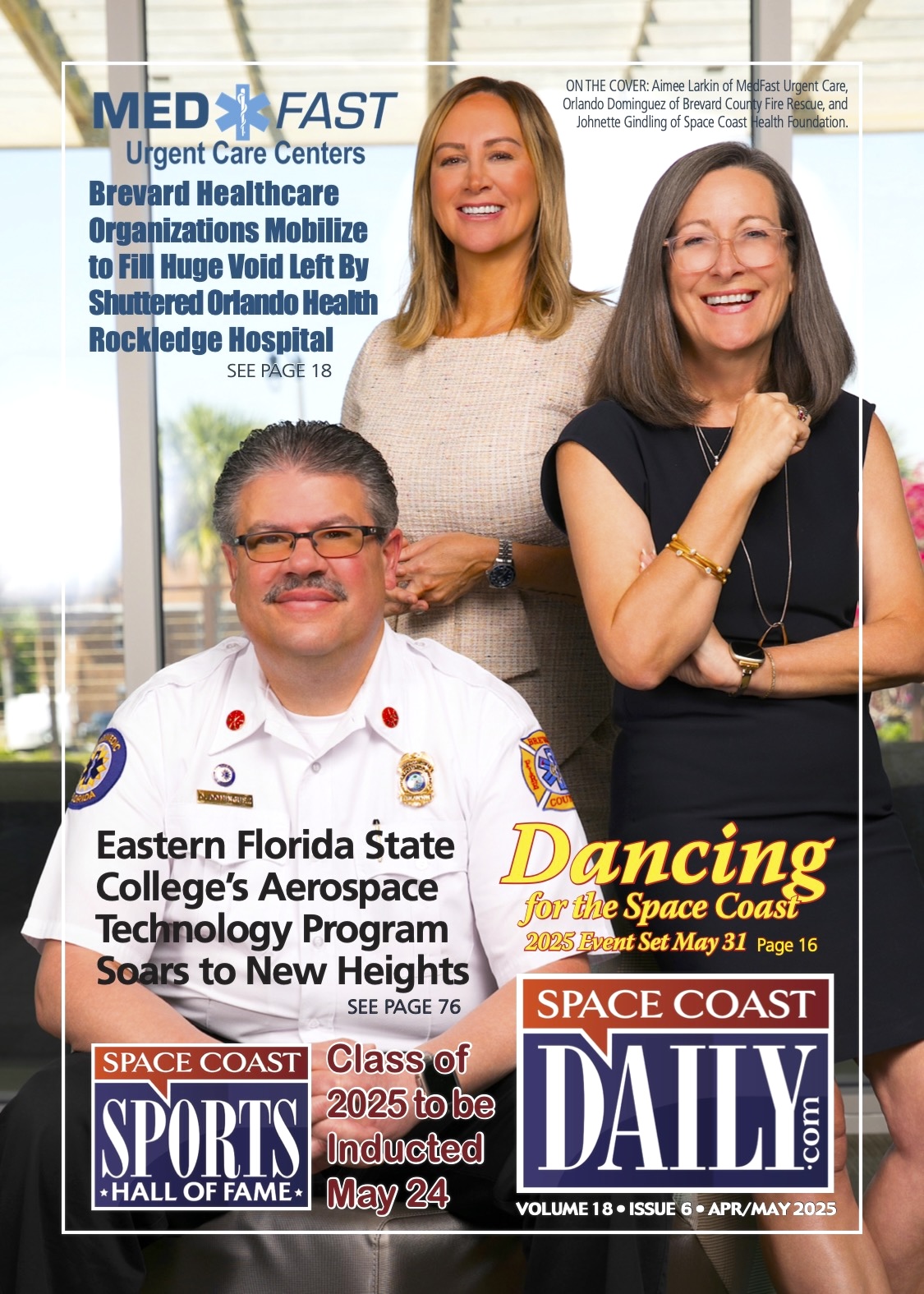Dr. Larry Bishop Drafted By Zoo To Treat Impala
By Maria Sonnenberg, Space Coast Medicine & Active Living // January 31, 2014
BISHOP: PEOPLE EASIER TO TREAT
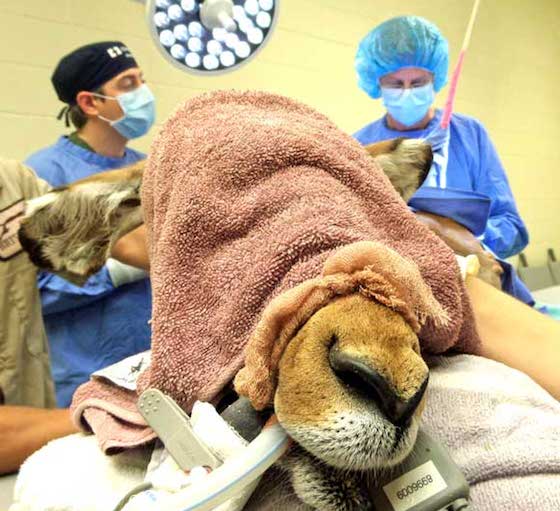
BREVARD COUNTY • MELBOURNE, FLORIDA – Georgia had reached that “certain age” when ugly and potentially deadly bumps and growths were starting to sprout up all over her body.
For most people, that means a trip to the dermatologist as soon as possible.
For Georgia, it meant a home visit from Health First Medical Group dermatologist Dr. Larry Bishop.
Dermatologists don’t usually perform house calls, but then Georgia is not your average patient. In fact, Georgia is not a human patient at all, but an impala, one of the gals in the herd at Brevard Zoo’s Expedition Africa exhibit.
ZOO IMPALA DODGES CANCER
The mid-sized antelopes that roam the veldts and savannas of eastern and southern Africa, impalas are the epitome of grace, and Georgia is no exception.
The convivial creatures, who gather in large herds to fend off lions and other predators, are also nature’s long jumpers, able to soar up to 10 feet in the air and jump distances of more than 30 feet.
Georgia arrived at Brevard Zoo from another zoo in 2011 with a group of fellow impalas.

Since impalas have an average lifespan of 15 years, Georgia, at 14-plus years, is no spring chicken, but the ungulate is still sprightly enough, and could have many years of jumping ahead, that is, if something like cancer does not sideline her.
Georgia dodged a medical bullet that could have threatened her longevity, and she did so with the help of Dr. Bishop, who this past December removed, via surgical excision, two suspicious lesions that were near a biopsy-proven melanoma.
“She had an abscess on her side for which we needed to anesthetize her to treat, and, during the process, we found a small blackened mass around the perineum,” said Brevard zoo veterinarian Dr. Trevor Zachariah.
The highly experienced Zachariah, who could give Dr. Doolittle a run for his money when it comes to understanding zoo animal behavior and physiology, felt he needed the help of a specialist to give Georgia the best of chances. “Dr. Bishop happened to have treated some of our staff, so I thought of him,” said Zachariah.
CLOSE TIES TO THE ZOO
Bishop’s wife, Cindy, is on the board of directors at the Melbourne zoological park, so the bond between the dermatologist and the zoo is a strong one. Bishop’s skills with skin cancer sealed the deal for Georgia’s treatment and the dermatologist agreed to do the procedure pro bono.
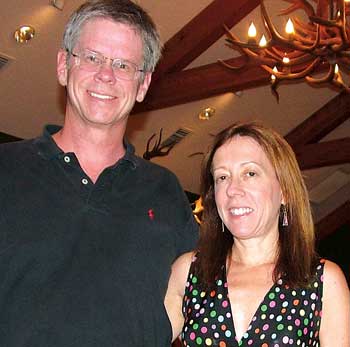
“He was all for it,” said Zachariah.
The procedure was the first time Bishop operated on anyone other than a human. “We took out two suspicious lesions that were near the biopsy-proven melanoma via surgical excision,” said Bishop. “We also excised the biopsy-proven melanoma. The whole process took about 5 minutes. We used standard, dissolving sutures.”
According to Zachariah, impalas are not prone to this type of tumor, so Georgia’s was an unusual case. “I have never seen that many tumors reported, because impalas don’t get those as frequently as other animals,” said Zachariah.
ZOO VET LOVES JOB, DEDICATED TO QUALITY CARE
Like Georgia, Zachariah himself is an exotic creature, one of only 159 veterinarians in the world to be board certified in zoo animal medicine. “The zoo vet community is very small,” he said.
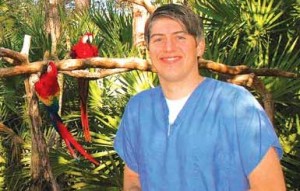
A graduate of Michigan State, Zachariah studied exotic pets and wildlife medicine at Louisiana State before heading to the University of Illinois in Chicago for his residency and aquarium medicine.
For Zachariah, there is no better job than being a zoo vet.
“Every day is different,” he said. “Theirs is never repetition. Because we tend to deal with so many different species, we end up being like a general practitioner.”
HEALTHCARE PROS ASSIST ZOO
When a case such as Georgia’s presents itself, Zachariah is fortunate to be able to tap onto Brevard’s medical and veterinary resources. “When we have the need for complicated surgery such as orthopedics, we will consult with human specialists,” said Zachariah.
Melbourne orthopedic surgeon Dr. Carlos Woodward, for example, helped treat an arm fracture of one of the zoo’s Goeldi’s monkeys, a shy species from the upper Amazon region. Like Bishop, Woodward did not charge the zoo a penny for his services.
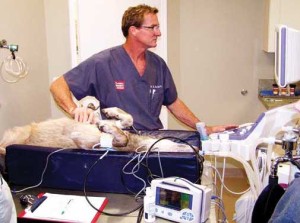
Also providing help at no cost to the zoo is the Animal Emergency and Critical Care Center of Brevard, the Melbourne facility that offers state-of-the-art veterinary care in fields such as neurology, cardiology and internal medicine.
When the zoo has required the use of diagnostic imaging, specialized monitoring and therapeutic and rehabilitative procedures for any of its animals, the Animal Emergency and Critical Center has stepped up to help.
“We’ve never had an instance where anyone has ever charged us for helping us,” said Zachariah. “We have a great relationship with them.”
BISHOP: PEOPLE EASIER TO TREAT
Georgia has been a model patient after her treatment.

“I followed up with Dr. Zachariah, who says she is doing fine,” said Bishop, who would have welcomed a follow-up checkup, but who decided against it, given the patient’s nature. “In order for us to examine her, she would have to be anesthetized, which would be hard on her,” said Bishop.
While treating Georgia the impala was an interesting experience, Bishop has no plans of expanding his practice to include animals. “People are much easier to treat,” he said. “That doesn’t mean I didn’t enjoy it and I would certainly help the zoo again if ever asked to.”






